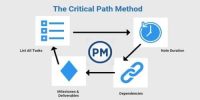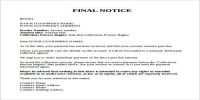Setting Performance Standards
Managers must translate plans into performance standards. These performance standards can be in the form of goals, such as revenue from sales over a period of time. The first step in the controlling process is setting up performance standards. Standards are the criteria against which actual performance would be measured. Thus, standards serve as benchmarks towards which an organization strives to work. The standards should be attainable, measurable, and clear.
Set Common Standards like:
- Review the job description with the employee, and discuss what sort of measurable goals the employee should set.
- Analyze any historical data available on the performance goals
- Determine what kind of progress you would like to see the employee achieve, and then place a number on that progress.
- Implement the performance standards and then schedule a meeting for the beginning of each month with the employee to discuss the standards.
Standards can be set in both quantitative as well as qualitative terms. For instance, standards set in terms of cost to be incurred, revenue to be earned, product units to be produced and sold, time to be spent in performing a task, all represent quantitative standards.
Establishment of standards –
Standards are the plans or the targets which have to be achieved in the course of business function. They can also be called as the criteria for judging the performance. Standards generally are classified into two-
- Measurable or tangible – Those standards which can be measured and expressed are called measurable standards. They can be in the form of cost, output, expenditure, time, profit, etc.
- Non-measurable or intangible- There are standards that cannot be measured monetarily. For example- performance of a manager, deviation of workers, their attitudes towards a concern. These are called intangible standards.
Controlling becomes easy through the establishment of these standards because controlling is exercised on the basis of these standards.
Following types of standards have been set for the effectual Controlling process –
- Profitability standards: These standards indicate how much profit an organization would like to make in a given time period.
- Market position standards: These standards indicate the percentage of the total product market that the company would like to win from competitors.
- Productivity standards: These production-oriented standards indicate various acceptable rates in which final products should be generated within the organization.
- Personnel development standards: Personnel development standards list acceptable of progress in this area.
- Employee attitude standards: These standards indicate attitudes that company employees should adopt.
Sometimes standards may also be set in qualitative terms. Improving the goodwill and motivation level of employees are examples of qualitative standards. The table on the next page gives a glimpse of the standards used in different functional areas of the business to gauge performance.
For instance, for improving customer satisfaction in a fast-food chain having self-service, standards can be set in terms of time taken by a customer to wait for a table, time taken by him to place the order, and time is taken to collect the order.
It is important that standards should be flexible enough to be modified whenever required. Due to changes taking place in the internal and external business environment, standards may need some modification to be realistic in the changing business environment.
















